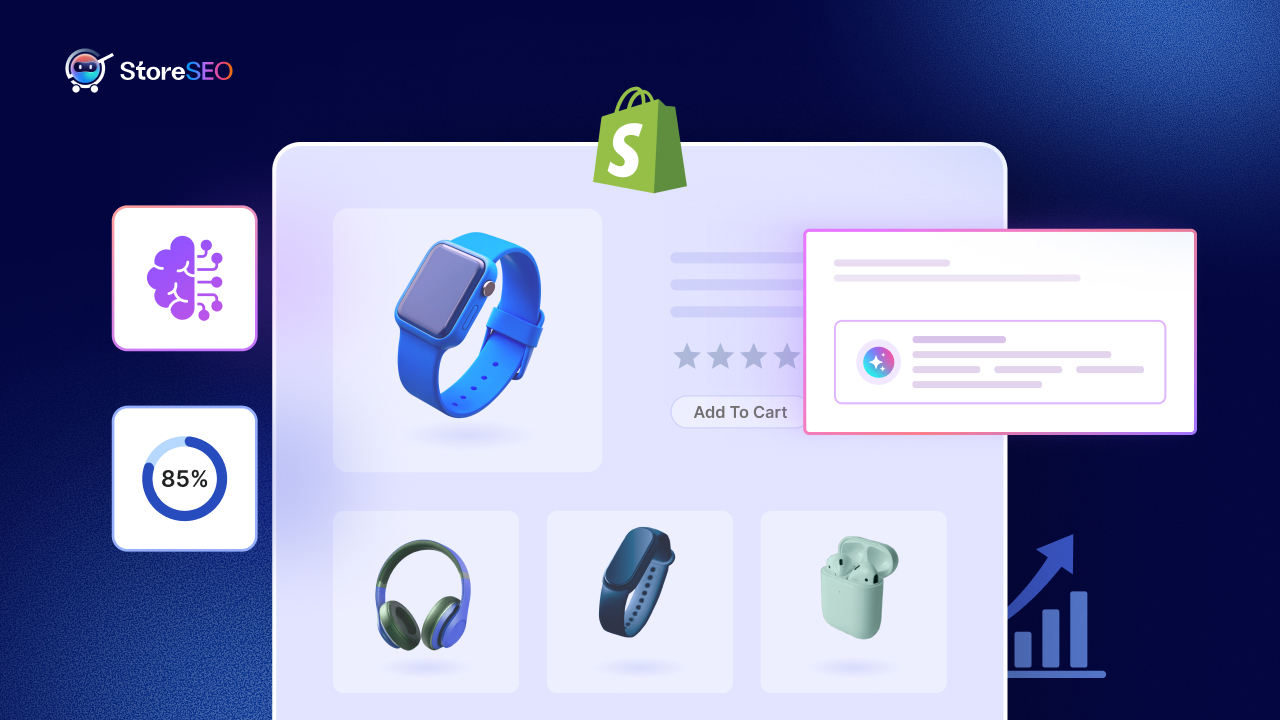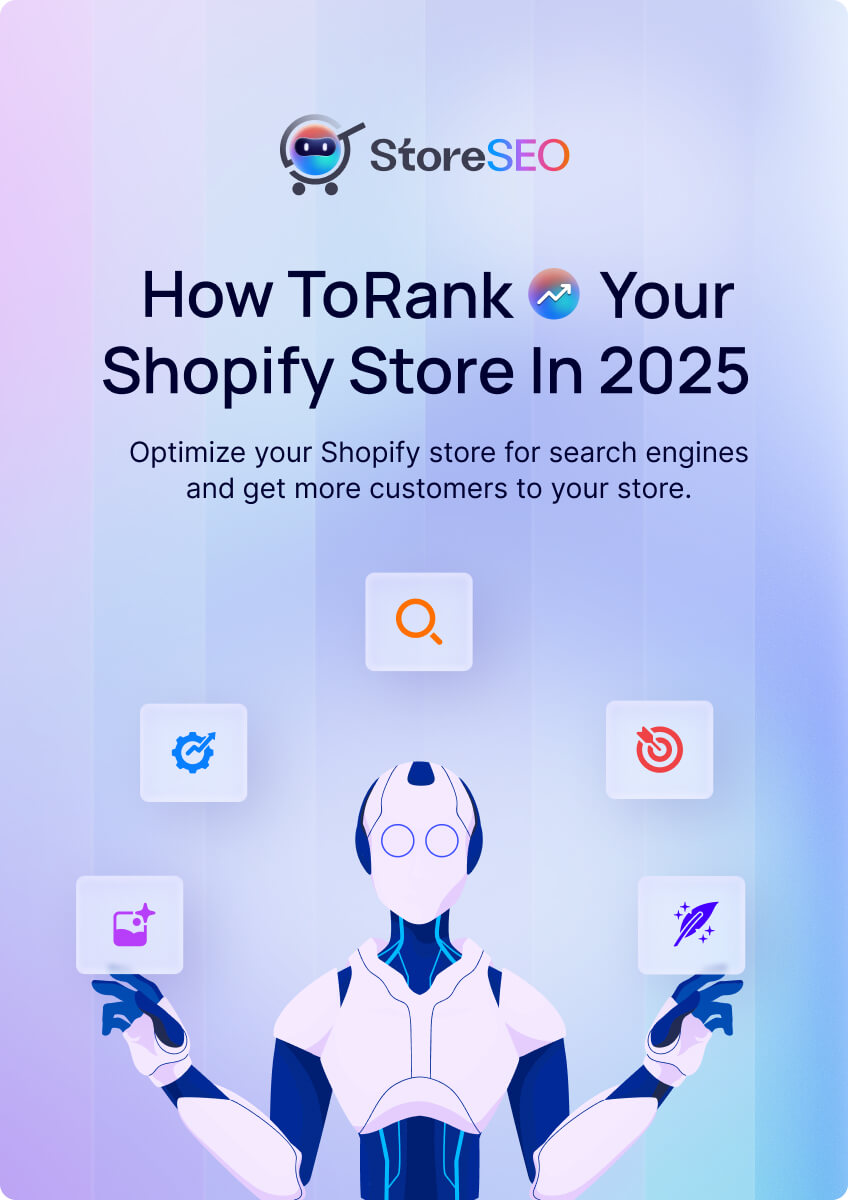If you are running a Shopify store, you already know that getting people to visit your site is a challenging task. Traffic is the source of any online business; without it, even the most beautifully designed store can feel like a ghost town. But why is driving traffic so crucial? Well, it is simple: more visitors mean more potential customers, and more customers mean higher revenue. In this blog, we will explore 5+ ways to drive traffic to Shopify stores & Increase revenue for your business. Let us jump right into it.

1. Search Engine Optimization (SEO)
Search Engine Optimization (SEO) is essential to drive traffic to Shopify stores increase your business visibility and attract organic traffic from search engines like Google. Effective blog SEO involves several key practices.

Keyword Research
Finding the right keywords is like discovering a treasure map that drive traffic to Shopify stores . Keywords are the terms and phrases people use when searching for products online. By targeting the right keywords, you can attract more visitors who are interested in what you offer.

Choosing the right keywords ensures that your store appears in relevant search results, driving targeted traffic. It is not just about getting visitors; it is about getting the right visitors who are likely to make a purchase. Having tools at your fingertips smoothens the workflow. Here are some of the popular ones:
- Google Keyword Planner: Great for finding related keywords and understanding search volumes.
- Ahrefs: Offers in-depth keyword analysis and competitive insights.
- SEMrush: Provides a comprehensive suite of tools for keyword research and SEO strategy.
- StoreSEO: The Keyword Analytics feature in StoreSEO allows users to perform comprehensive keyword research effortlessly for their Shopify store.
On-Page SEO
On-page SEO involves optimizing individual pages on your site to rank higher and earn more relevant traffic from search engines.
☑️ Optimizing Product Titles and Descriptions:
Your product meta titles and meta descriptions should be clear, descriptive, and keyword-rich. For example, instead of “Leather Wallet,” use “Men’s Genuine Leather Wallet – Bifold with RFID Protection” to capture more specific searches.
☑️ Using Alt Text for Images:
Alt text helps search engines understand what your images are about, improving your site’s SEO. For instance, an image of a leather wallet should have alt text like “Men’s Genuine Leather Wallet.”
☑️ Creating SEO-Friendly URLs:
For creating SEO-friendly URLs keep your URLs short, descriptive, and keyword-rich. Use hyphens to separate words and avoid using special characters. For example, “yourstore.com/mens-leather-wallet” is much better than “yourstore.com/product12345.”
Technical SEO
Technical SEO focuses on the backend of your website, ensuring it runs smoothly and efficiently.
☑️ Improving Site Speed:
A fast-loading site enhances user experience and boosts your SEO rankings. Compress images, use a content delivery network (CDN), and minimize code to speed up your site.
☑️ Ensuring Mobile-Friendliness:
With more than half of web traffic coming from mobile devices, having a mobile-friendly site is crucial. Use responsive design to ensure your site looks great on all devices and test your site on various screen sizes.
☑️ Using Structured Data:
Structured data helps search engines understand your content better, leading to rich snippets in search results. Use schema markup to provide detailed information about your products, such as price, availability, and reviews.
2. Social Media Marketing
Choosing the right social media platforms is crucial for reaching your target audience effectively, as different platforms cater to different demographics and types of content. Instagram is ideal for visually appealing products like fashion, beauty, and home decor, with features like Stories, Reels, and Shopping enhancing its e-commerce capabilities.
Facebook, with its extensive user base, is great for reaching a broad audience and offers robust advertising options and tools like Facebook Shops. Pinterest is perfect for products that benefit from strong visual appeal, such as crafts, recipes, and DIY projects, as users often search for inspiration. Creating engaging content, such as regular posts, high-quality images, and videos, is key to capturing attention and driving traffic to your Shopify store. Running targeted ads on platforms like Facebook and Instagram, along with retargeting strategies, can significantly boost visibility.
Partnering with influencers can help reach a wider audience and build trust, while giveaways and contests can generate excitement and engagement. Paid advertising, including Google shopping campaigns, social media ads, and budgeting for ROI, is essential for reaching a wider audience and driving targeted traffic.
Setting up Google Shopping campaigns and using Google Search and Display ads can capture high-intent users and build brand awareness. Running ads on Facebook, Instagram, Pinterest, and TikTok allows businesses to target specific demographics and interests, enhancing brand identity.
Creating a budget involves understanding profit margins, and customer lifetime value, and setting a realistic cost per acquisition target while measuring ROI through key performance indicators and A/B testing to ensure campaign effectiveness and sustainable growth.
3. Content Marketing

Content marketing is a dynamic and multifaceted approach that involves creating and sharing valuable content to attract and engage your target audience. Let us dive into three key areas of content marketing: blogging, video marketing, and user-generated content, and explore how each can be leveraged effectively.
Blogging
Blogging is a fundamental aspect of content marketing that allows you to share your expertise, build trust with your audience, and improve your website’s SEO. Writing informative and engaging blog posts involves understanding your audience, choosing relevant topics, creating compelling headlines, providing valuable content, using visuals, and optimizing for SEO.
Video Marketing
Video marketing is a powerful tool for showcasing your products and services. Creating product demos and tutorials helps potential customers understand how your products work and how they can benefit from them. To create effective videos, plan your content, use high-quality equipment, demonstrate rather than just talk, keep videos concise, and include a call to action.
Platforms like YouTube and social media are excellent for distributing video content. Optimize your videos for YouTube with relevant keywords, create engaging thumbnails, leverage social media for wider reach, engage with your audience through comments, and use analytics to track performance and improve your strategy.
User-Generated Content
User-generated content (UGC) is content created by your customers that showcases their experiences with your brand. It is a powerful way to build trust and authenticity. Encourage customers to share their experiences by creating a branded hashtag, running contests and giveaways, featuring UGC on your channels, asking for reviews and testimonials, and engaging with UGC. Reviews and testimonials are particularly effective for building credibility.
Collect reviews on platforms like Google and Yelp, showcase testimonials on your website and marketing materials, highlight key points from reviews, create detailed case studies, and share positive reviews on social media. UGC not only reflects your audience’s true sentiments but also fosters a sense of community and increases your brand’s visibility, conversion, and engagement.
4. Affiliate Marketing
Affiliate marketing is a fantastic way to grow your business through the power of partnerships. Along with your Shopify stores, you can apply this for your WordPress Let us break down the key components of setting up a successful affiliate program, from choosing the right platform to optimizing performance.
Setting Up an Affiliate Program
First, you need to choose the right affiliate platform. Look for one with a user-friendly interface, robust security features, and seamless integration with your existing eCommerce tools. Platforms like ShareASale and Commission Junction are popular choices because they offer built-in marketplaces to connect with potential affiliates easily.
Once you have selected your platform, it is time to create an attractive commission structure. Common structures include a percentage of sales, flat fees, or tiered commissions, which reward affiliates with higher rates as they generate more sales, along with Shopify it works for other websites too.
Recruiting Affiliates
Finding and onboarding the right affiliates is crucial. Start by promoting your program on your website, social media channels, and through email marketing. Joining an affiliate network can also help you connect with experienced affiliates who have a proven track record.
When evaluating potential affiliates, consider their audience alignment, content quality, and online reputation. Once you have recruited affiliates, provide them with high-quality marketing materials like banners, text links, email templates, and detailed product information to help them promote your products effectively.
5. Marketplace and Sales Channels
Using marketplaces and sales channels is a crucial strategy for expanding your eCommerce business. Listing your products on popular marketplaces like Amazon and eBay can significantly increase your reach and sales potential. Amazon, for instance, offers a vast customer base and services like Fulfillment by Amazon (FBA), which handles shipping and customer service, allowing you to focus on other aspects of your business.
eBay, with its auction-style listings, provides a versatile platform for selling both new and used items. To optimize your listings for visibility, it is essential to use high-quality images, craft compelling product titles with relevant keywords, provide detailed product descriptions, and encourage customer reviews. These elements help improve your product’s search ranking and attract more buyers.
Integrating Shopify with other sales channels can streamline your operations and enhance your reach. Shopify Plus, for example, offers integrations with over 20 different sales channels, including Amazon, eBay, Facebook Shop, and Instagram. This integration allows you to manage all your sales activities from a single dashboard, making it easier to track performance and make informed decisions.
6. Guest Posting
Guest posting is a highly effective strategy to drive traffic to your Shopify store and increase revenue. By leveraging the audiences and domain authority of other blogs in your niche, you can enhance your store’s visibility, credibility, and ultimately, profitability. Guest posting involves writing and publishing an article on someone else’s website or blog, allowing you to tap into the host site’s audience and attract new visitors to your own site.
This practice not only drives highly targeted traffic but also helps build backlinks, which are crucial for improving your site’s search engine ranking. Additionally, guest posting can establish you as an authority in your niche, enhancing your credibility and trustworthiness. To get started, identify relevant blogs with substantial followings and good domain authority.
Create a compelling blogging package that outlines what you offer and what you expect in return, and pitch your ideas to blog owners. Once your pitch is accepted, focus on creating high-quality, valuable content that is informative, engaging, and relevant to the host site’s audience.
After your guest post is published, promote it through your channels to drive traffic to the host site and show your commitment to the collaboration. By consistently providing valuable content and building relationships with other bloggers and influencers, guest posting can be a game-changer for your Shopify store, driving traffic, improving SEO, and increasing revenue.
Use Shopify Apps To Drive Traffic to Shopify Store
StoreSEO is a powerful SEO app designed for Shopify stores, offering comprehensive features to boost organic traffic and improve search engine visibility. It simplifies keyword optimization, integrates with Google Search Console for performance monitoring, and enhances meta descriptions to increase click-through rates.

The app also optimizes site structure for better indexing, automatically generates ALT text for images, and provides detailed SEO analysis reports. With its user-friendly interface, StoreSEO makes it easy for store owners to enhance their SEO strategies, attract more visitors, and ultimately increase sales. If you are looking to improve your store’s SEO effortlessly, StoreSEO is the app you need.
Have you found our blog useful? If you do, please subscribe to our blog for more tips, tutorials, and updates on industry-related topics.









